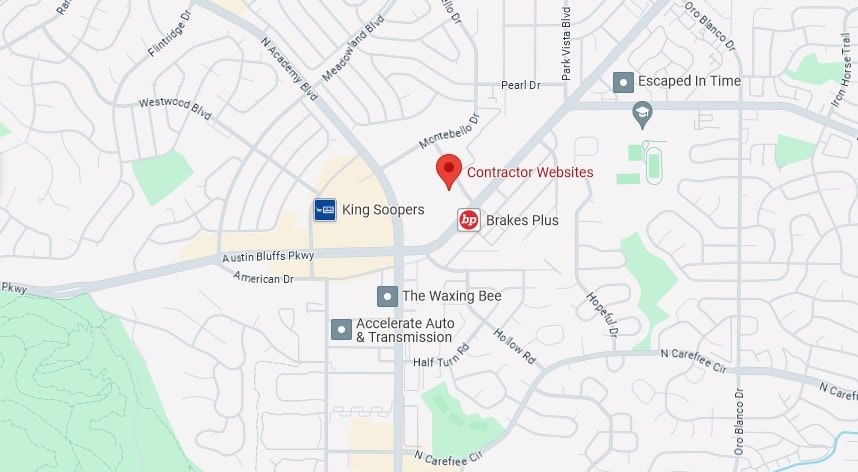A Step-by-Step Guide to Building a Contractor Website
In today's digital world, a well-constructed website serves as the cornerstone of a contractor's business. If done well, it will be your primary tool for attracting clients, showcasing skills, and building credibility. Whether you're a seasoned contractor looking to refresh your online presence or just starting out, this step-by-step guide can simplify the process of building a website that not only looks professional but also ranks well in search engines and converts visitors into clients. Here's a comprehensive blueprint for creating a successful contractor website.
Step 1: Define Your Website Goals
Before diving into the technicalities, clarify what you want your new website to achieve. Are you looking to generate leads, provide information, or showcase your portfolio? Understanding your objectives will guide the design, content, and functionality of your site.
Step 2: Choose a Domain Name
Your domain name is your web address and the name you choose is an important decision. You’ll want to choose a name that is easy to remember, spell, and reflects your business's name or services. It should also be a ‘.com’ because it is still the most commonly used for companies and what people are used to typing.
To search for domain names, you can search on GoDaddy or any other domain registrar website. On the same page where you search for domains on GoDaddy, they will give you alternate options if the domain name you want is not available.
A few things to keep in mind before purchasing a domain name:
- If you have a common name and want to use it in the domain name, go to Google first and search to see what comes up. For example, we have a landscaping client whose last name is very common. For this example, we’ll call him Joe Smith. He named his company Smith Landscaping and that is what he wanted his domain name to be. When we searched “Smith Landscaping” in Google four other companies in the area with similar names appeared: Smith Landscaping Services, Smith Lawn Services, Smith Landscapes, and Smith Landscaping, Boulder. You want a name that is going to stand out. We suggested, if he really wanted to use his last name, to also use his first name to make it different. We also suggested that he use a DBA Name for his company. So his company now goes by Joe Smith Landscaping and the domain he purchased was joesmithlandscaping.com. The idea here is you want your domain name to be unique and to stand out.
- Research the history of the domain name to see if it was recently dropped by another company. If the company is still in business but has a different domain name, chances are the domain name has Google penalties against it. When a domain name has penalties against it, it will be very difficult to rank in the search engines. To research the domain’s history, you can use a sight like Big Domain Data.
- Check with an attorney or at a minimum search the US Trademark Database to ensure the name you want to purchase is not infringing on someone’s copyright. We have a customer that received a cease-and-desist letter two years after going live with her website for stepping on someone’s trademarked name. Needless to say, it cost her some money to rebrand.
Step 3: Select a Web Hosting Service
Web hosting is where your website lives on the internet. Choose a reliable hosting provider that offers good uptime, customer support, and scalability options. Depending on your budget and technical skills, you can opt for shared hosting, a virtual private server, or dedicated hosting. Shared hosting will be the most economical but sharing a server with a thousand other customers could cause your website to run slow. You’ll want to watch that when you go live. If you don’t have a technical background, you might consider Managed Website Hosting.
Step 4: Pick a Website Building Platform
With various website builders available, such as WordPress, Joomla, Wix, and Squarespace, select one that fits your needs and skill level. WordPress and Joomla are popular for their flexibility and extensive features. They are both open source software which means if you want to change the way the program works, you have access to the programs to make those changes. In comparison, website builders like Wix and Squarespace offer more user-friendly, drag-and-drop interfaces but their software is proprietary. That means you can’t just lift the hood and start working on the engine, you have to go through the vendor to have changes made and you are at their mercy.
Step 5: Design Your Website
The design of your website should reflect your brand's image and appeal to your target audience. If you have a brand guide, stay within the parameters of your brand. If you don’t have a brand guide, pick a color palette and fonts that you can be happy with for the lifetime of your business. Your website should have a clean, professional layout with easy navigation. And be sure your design is mobile-friendly, as many users access websites through mobile devices.
Step 6: Create Engaging Content
Aside from looking good, the content on your website is the most important piece. It is the written word that the search engines use to rank your website. Before you start writing choose one primary keyword for each page of your website to ensure you don’t duplicate content. You’ll want to develop content that speaks to your audience, and showcases your services, experience, and expertise.
When you write your content write in second person voice using words like “you” and “your” rather than “we” and “I” and use a conversational tone. Your content goal should be to inform the potential client of what they can expect if they choose to work with your company. The best content will hit their pain points and then explain how your company will cure their pain. As you write, you’ll want to be relatable. People work with people they know, like and trust. Use your website to help them get to know, like, and trust you and your business. Also, remember that your website is your 24/7 salesperson so answer the questions your prospective clients want to know.
Step 7: Implement SEO Best Practices

SEO best practices start as you write your content. You will want to include the keyword that you chose for each page in the heading, and in a few subheadings. You’ll also want to use it a few times in the content. When your page is entered into your website, include a meta description to describe what people will learn if they click on this page from the search engines. Google doesn’t use keywords anymore but enter the keyword of each page in the keyword field. Although Google has 86% market share, there are other search engines that do still use keywords.
Images are another opportunity to help your website rank. As you place images in your content, include alt text to describe how that picture relates to the topic. For example, you are a remodeler, and your page is talking about kitchen remodeling. You show a picture of a bookcase in the kitchen. In the alt image you say, “The client of this home wanted a bookcase added in her kitchen remodel, because there wasn’t room anywhere else, we turned this closet door to the walk-in pantry into a bookcase.”
Step 8: Add Essential Features
The next thing you’ll want to decide is where your contact form will go on your website and what information you will ask potential clients to provide. In our experience, the shorter the form the more people will fill them out. Additionally, we’ve found that having the form on each service page converts better than having a button that takes the visitor to another page or pop-up page.
Other features you should include in your website are a:
- Privacy policy page
- Terms of use page
- Blog
- Newsletter Signup
- Strong Calls to Action
I know you are thinking, I’m never going to blog or have a newsletter. That’s okay. Better to have them and not use them, than to not have them at all. Writing a blog is a great way to provide value added information to website visitors. It is also another page on your website that can rank and bring people to your website.
A newsletter is a great way to stay top of mind with prospective buyers and also a perfect way to keep in touch with past customers without being intrusive. Think referrals.
On each page you want a strong yet subtle call to action. We have found that “request a price quote” is too much for some people. Our approach is to keep it soft, “Ready to start on your project? Let’s talk.”
Step 9: Test and Launch Your Website
Before going live, test your website thoroughly to ensure everything works as expected. Chrome is the most used web browser on desktops and laptops, but you’ll also want to test on Microsoft Edge and Safari. Then you’ll also want to test on an I-Phone and an Android Phone. Check for broken links (these are buttons or hyper-links that don’t work), loading issues, mobile responsiveness, and test your forms to make sure you receive the requests. Once satisfied, launch your site and monitor its performance with Google Analytics and Google Search Console.
Step 10: Promote and Maintain Your Website
After launching, promote your website through social media, email marketing, and all of your other marketing channels. Be sure to regularly update your content, portfolio, and blog to keep your site fresh and encourage repeat visits. Google likes websites that are updated regularly.
Conclusion
Building a contractor website may seem daunting, but by following these steps, you can create a robust online presence that showcases your expertise, attracts potential clients, and helps grow your business. Remember, your website is an evolving tool that should be updated and optimized regularly to meet changing market demands and technology trends. With the right approach and ongoing effort, your contractor website can become your most powerful marketing asset.
The Key Features of a Successful Contractor Website


